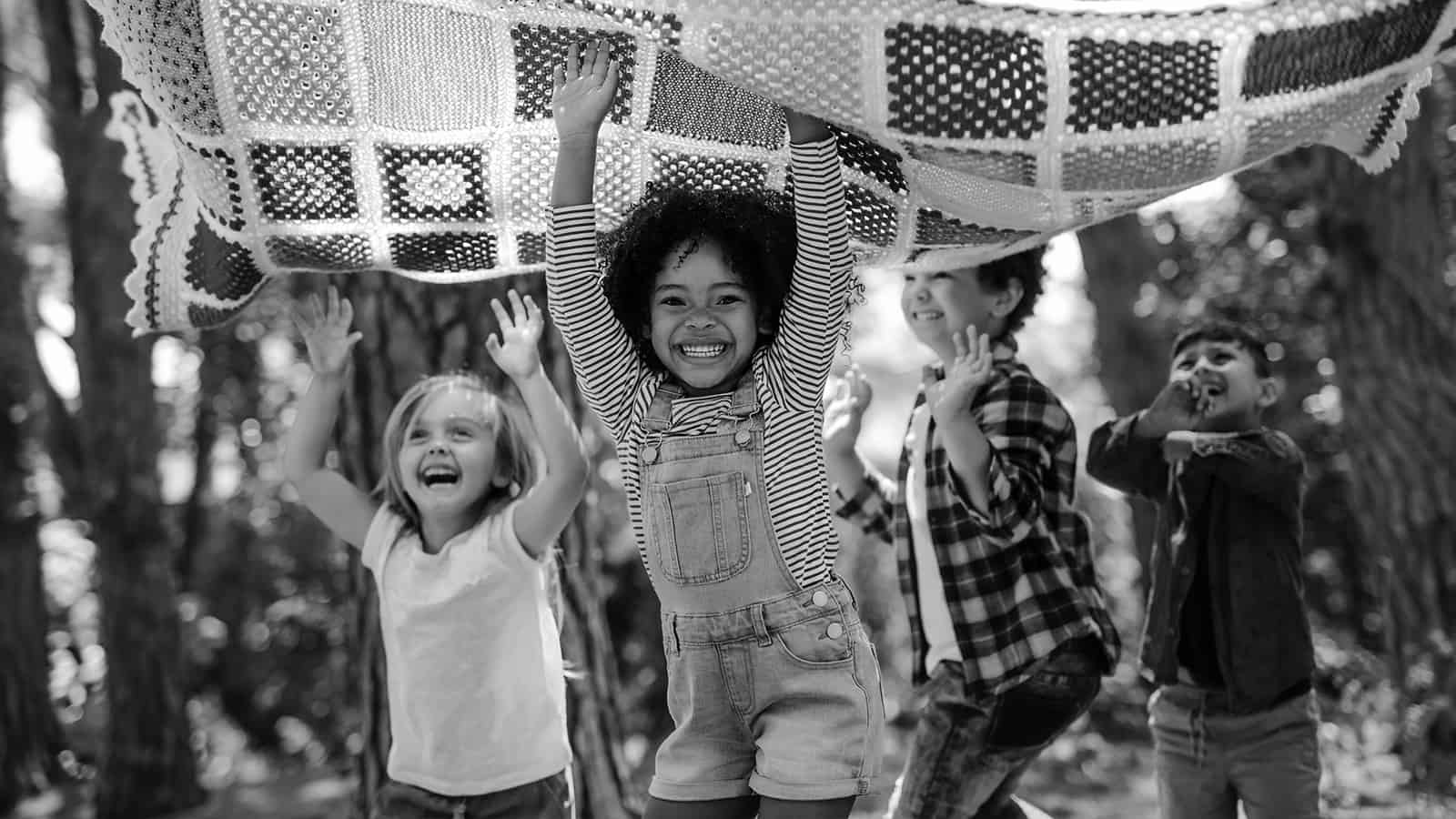Children thrive when playing outside and learn about practical risk assessment skills. While it’s tempting to keep them indoors and away from risk, it won’t help them grow or develop.
Developing practical risk assessment skills require kids to undertake challenges in the world around them. Through outdoor play, kids learn about and process the benefits of specific activities and the risks involved. The real dangers that they handle lead to powerful and memorable learning experiences.
The challenges a child encounters could be physical, psychological, or both. Additionally, the challenges might include real risk with immediate consequences or perceived threat. Whether it is accurate or perceived, it helps children understand the likelihood of risk and the effects of its negative consequences.
What are Practical Risk Assessment Skills
Practical risk assessment isn’t a skill that can be graded, but it is still essential for children to learn. When they learn that small actions at the moment lead to severe outcomes, they’ll learn to assess each situation as it occurs. Then they will understand which movements to avoid altogether.
You can calculate the risk of any situation by multiplying the consequence by the likelihood of occurrence. A child must learn this method and determine the worst possible outcome to consider how likely it is.
One example is taking a child to play near a body of water. Without training, supervision, and a flotation device, the risk is high, and the consequences are severe.
However, if you take your child into the woods and let them play on fallen logs, the consequences aren’t as high. Even if the child falls off, the outcome isn’t as severe as what could occur in the water.
Learning these skills during childhood can protect the child and help them understand what is safe and what isn’t. You won’t always be right by their side to guide them, so allowing them to build the necessary skills is essential. Kids need time to explore and learn about risks and consequences.
These learning opportunities cannot occur if a child isn’t allowed to explore the environment. They must have the chance to use their bodies in complex ways rather than always playing safely indoors. Risk assessment can’t be taught with a book, but it is an invaluable skill that requires adults to give a child the time and space to do so.
Is It Safe?
While you don’t want to see a child get hurt, children are made for this type of learning. They have more bones than adults because their cartilage hasn’t hardened and connected the bones yet. This difference makes children more flexible than adults, and they can handle things like falls better.
Children also have a different chemical composition in their bones than adults do. Adult bones are more likely to break because of their makeup, as they are more brittle. The chemical composition of children’s bones makes them heal quicker, making it the best time to develop a practical risk assessment.
Kids are closer to the ground and weigh less, and their bone structure is also different than adults. Their bodies are made to withstand twists, turns, and tumbles during childhood. When playing outdoors, kids learn about consequences and levels of severity that occur during their experience.
Use Your Best Judgment in Letting Kids Gain Risk Assessment Skills
Letting your child engage in risky play outside doesn’t mean putting them in situations that can cause serious harm. Instead, it means allowing them to explore and move in a natural environment. You know the things that won’t benefit a child, so use your best judgment.
You’ll find comfort knowing that your child can take risks without the potential of severe injuries. It’s best to remove things like:
- Sharp edges
- Unstable heavy structures
- Things their head can get stuck inside
Additionally, children gravitate toward natural elements like water and fire, but you shouldn’t take these activities lightly. Adults should be with children when there’s the risk of severe consequences, guiding children instead of letting them learn the hard way. Children also enjoy learning about dangerous tools like saws, but again, those are things that they shouldn’t do alone.
How Playing Outside Helps Develop Risk Assessment Skills
Here are some excellent reasons to let your kids explore the outdoors.
They Can Experiment with Movement and Outcomes
When children play outside, they experience complex movements with different outcomes. They’ll get bumps, bruises, or scrapes to teach them what happens when they move a certain way.
If the child falls, they eventually learn that falling on concrete is different than falling on the grass. They’ll also discover that falling from a higher surface will likely hurt more than falling when closer to the ground. Given a chance, children will learn many differences about their environment.
It Prepares Children for Future Risk Assessment Experiences
Experts say that playing outside prepares children for the future by helping them do the following:
- Have the chance to try again
- Learn to cope and self-regulate
- Develop self-esteem and confidence
- Challenge themselves
- Succeed
- Express creativity
- Become independent
- Understand personal boundaries and limits
- Develop social skills
- Improve body awareness
- Boosts motor skills
- Understand the environment
It Promotes Growth and Development
Allowing children to play outside and learn practical risk assessment skills will stick with them forever. Risks are everywhere, and people must know how to manage them appropriately. As babies learn to walk, they often get bruises and experience falls.
When children learn to ride a bike, there are likely a few injuries. If those falls didn’t occur, the child wouldn’t have learned to master the task. The same idea persists well into adulthood, with the practical risk essential for growth and development.
Teaches the Risk Assessment of Uncertain Hazards
To teach children about assessing risks and managing them appropriately, you must allow them to climb, jump, play with sticks or rocks, and do other things when playing outdoors. Risky play gives children the opportunity to experience uncertain and unpredictable hazards that they can learn from.
They Learn About Likelihood
Children learn about likelihood as they grasp how likely it is that something might occur. If it happens once, they’ll start to realize that it can happen again. The more often they experience the same outcome, the more they grasp the idea of likelihood.
Kids can determine which risks are worth the potential outcome and how likely it is to occur. This thought process helps them make choices in situations they’re unsure of. It helps them stay safe while also learning developing.
Getting Your Children Outside
Think back to your childhood and make a note of what you recall. This exercise shows that their most memorable moments were spent outside for many adults. However, children in current times don’t experience the same opportunities for outdoor play.
Screen time is becoming more prevalent, and children spend less time outside playing. This problem is common because adults tend to worry about bad things happening more than they did before. Adults keep children inside when the adult can’t join them outside because of traffic, kidnapping, injuries, and other scary situations.
While being cautious in this regard is good, it’s also essential that children get time outside to learn about the world. When adults constantly regulate and control what a child does, the child doesn’t get the opportunity to explore. The best course of action here is to find a reasonable compromise.
If you work from home, consider taking your laptop and other material outside while your child plays without you. That way, you’re nearby to prevent the things you worry about, but your child still gets the independent exploration they need for learning. Plus, you still get your work done and don’t have to put your child in front of a screen to keep them occupied.
If you don’t work from home, you can be creative in finding ways to get your child outside more often. However, you must be willing to allow your child to take risks. You might think that removing all risks is best, but it hinders your child’s learning and development.
Risk-taking is a positive aspect of play and learning, and not allowing it comes with consequences, including:
- Less physically fit
- Poorer motor skills
- Unable to manage daily risks
- Lack of resilience
- Mental health issues
What You Can Do
Children gravitate toward certain aspects, and they need to have the freedom to explore them. Children must learn about:
- Heights, including balancing, hanging, or climbing
- Speed, including running, biking, or going down a slide
- Rough play, including wrestling and play fighting
- Getting lost by playing in woodlands or other areas
You can encourage your child to learn practical risk assessment skills by providing what they need to make it happen. One idea is to add a climbing structure to allow height exploration and resiliency. Adding a trampoline will encourage them to experiment with speed and movement.
Letting children explore woodlands encourages freedom, independence, self-confidence, and respect for nature. Bikes, scooters, balls, and swings help with motor skill development. Rough play allows children to use risk assessment skills, develop social skills, be creative, and identify feelings.
When children don’t have these opportunities, they’ll start looking for them in other ways. They might do it unsupervised or in unsafe situations. However, if you allow them to take risks while playing outside, they won’t be as likely to look for the opportunity elsewhere.

Final Thoughts on How Playing Outside Helps Kids Learn Practical Risk Assessment Skills
While you want to ensure that the children in your life are being safe, you don’t want to take away every risky opportunity. Children must learn about the world around them and experience consequences when necessary.
Use this information to make your yard child-friendly, leaving opportunities to develop practical risk assessment skills. By doing so, you help the child develop and grow with beneficial skills.



















